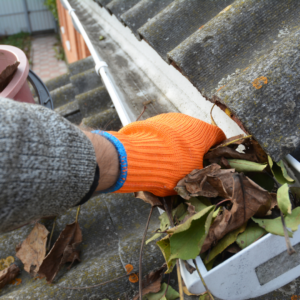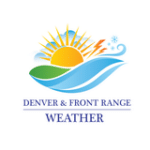Colorado’s wildfire season is a growing concern for homeowners, especially those living in high-risk areas. Without the proper roofing materials and installation practices, homes become vulnerable to embers, heat, and flames. This wildfire resistant roofing installation guide will help you understand how to protect your home.
The wildfire resistant roofing installation guide includes maintaining a clean roof to remove combustible debris, using non-combustible flashing and installing ember-resistant roof vents, considering a roof sprinkler system for extra protection, and maintaining a vegetation barrier to prevent fire spread.
- Keep Your Roof Clean and Debris-Free to Minimize Fire Hazards
- Use Non-Combustible Flashing and Ember-Resistant Vents
- Maintain a Vegetation Barrier to Prevent Fire Spread
- Consider Installing a Roof Sprinkler System for Extra Fire Protection
- Key Benefits of Wildfire Resistant Roofing for Your Home
- Safeguard Your Home with Expert Wildfire Resistant Roofing
Key Takeaways:
- Regularly clear debris like leaves and pine needles from your roof and gutters to prevent fire hazards.
- Install non-combustible flashing and ember-resistant vents to safeguard vulnerable areas such as chimneys and skylights.
- Add a roof sprinkler system as a final layer of defense, wetting your roof and surrounding area to reduce ignition risks during wildfires.
- Keep plants and trees trimmed back from your home, creating a defensible space with fire-resistant vegetation to prevent fire spread.
- Beyond fire protection, wildfire resistant roofing increases your home’s value and may lower insurance premiums.
There’s more to learn about safeguarding your roof against wildfires, including material options and expert installation tips. Keep reading to discover how to ensure your home is as fire-resistant as possible.
Keep Your Roof Clean and Debris-Free to Minimize Fire Hazards
Even the most robust wildfire resistant roofing won’t provide full protection if your roof isn’t maintained properly. Accumulated debris, such as leaves, pine needles, and twigs, can become highly flammable during wildfire season, providing fuel for embers to ignite.
To ensure maximum safety, regularly clean your roof and gutters, removing all combustible materials. Experts recommend cleaning your roof at least twice a year, especially before and during wildfire season. This practice, combined with installing wildfire resistant roofing, helps keep your home as fireproof as possible. Regular maintenance is a key component of an effective wildfire defense strategy, ensuring that your roofing system provides the best protection against embers and flames.
Use Non-Combustible Flashing and Ember-Resistant Vents
Wildfires don’t just attack the surface of your roof—fire can also infiltrate through vulnerable points like vents, chimneys, and flashing. Research by the National Institute of Standards and Technology (NIST) shows that embers can penetrate through roof vents and small openings, making vents one of the most vulnerable areas of a home during a wildfire. Installing non-combustible flashing around these areas ensures that flames cannot penetrate, providing an essential layer of protection for your wildfire resistant roofing system.
Ember-resistant vents are another critical component. According to Western Fire Chiefs Association, homes with ember-resistant vents can reduce the risk of wildfire by up to 40%. These specialized vents allow for necessary air circulation but prevent embers from entering your home, making them an important addition to any wildfire resistant roofing strategy.
Maintain a Vegetation Barrier to Prevent Fire Spread
A well-maintained defensible space around your home is one of the most effective ways to prevent fire from spreading to your roof. By trimming trees and plants at least 30 feet away from your home and roof, you eliminate combustible materials that could fuel a fire during wildfire season.
In addition to keeping vegetation away, consider incorporating fire-resistant plants into your landscaping. Certain plants, such as lavender and ornamental grasses, are less likely to ignite, providing an extra layer of protection. This approach complements your wildfire resistant roofing, creating a multi-layered defense system that helps safeguard your home against the spread of wildfires. Taking these steps ensures that your home is better prepared to withstand potential fire threats.
Consider Installing a Roof Sprinkler System for Extra Fire Protection
For those seeking the highest level of fire protection, installing a roof sprinkler system can provide extra peace of mind. Research from the National Fire Protection Association (NFPA) shows that homes equipped with sprinkler systems are 90% more likely to control a fire. Roof sprinkler systems wet your roof and surrounding areas before a wildfire reaches your property, significantly reducing the risk of ignition by cooling the structure and preventing embers from catching fire.
While not essential for wildfire resistant roofing, roof sprinklers offer an additional layer of fire protection, especially in areas with frequent wildfires. This system can be the final component in a comprehensive fire defense strategy, providing extra protection for homes in high-risk wildfire zones.
Key Benefits of Wildfire Resistant Roofing for Your Home
Investing in wildfire resistant roofing provides more than just fire protection—it offers peace of mind. Here are some of the key benefits:
- Increased Safety: Fire-resistant materials reduce the likelihood of roof ignition, safeguarding your home and family.
- Durability: Many wildfire resistant materials, such as metal and slate, are also highly durable, reducing the need for frequent repairs.
- Property Value: Installing wildfire resistant roofing can increase your home’s market value, particularly in areas where wildfire risks are high.
- Lower Insurance Premiums: In some cases, homeowners with fire-resistant roofs may benefit from lower insurance premiums due to the reduced risk of fire damage.
These benefits make wildfire resistant roofing an investment that pays off both in safety and long-term savings.
Safeguard Your Home with Expert Wildfire Resistant Roofing
Installing wildfire resistant roofing is an essential step in protecting your home in fire-prone areas like Colorado. By maintaining a clean roof, and addressing vulnerable areas with non-combustible flashing and ember-resistant vents, you can create a strong defense against wildfires. Maintaining a defensible space with vegetation, and considering roof sprinklers further enhance your home’s fire protection. Taking these preventive measures not only safeguards your property but also provides peace of mind.
Contact Just Roofs & Gutters today to get your online roof estimate in seconds. Our experienced team is here to guide you through selecting the best wildfire resistant roofing materials and ensuring a flawless roof installation, providing your home with maximum protection and long-lasting peace of mind.
Can I retrofit my existing roof to make it wildfire-resistant, or do I need a complete replacement?
Yes, in many cases, you can retrofit your existing roof to improve its wildfire resistance. Adding fire-resistant underlayment, replacing combustible materials with Class A fire-rated options like metal or asphalt shingles, and installing fire-resistant vents and flashing are all effective retrofitting options. However, if your roof is old or damaged, a complete replacement might be the best long-term solution for maximum protection.
Are there local building codes for wildfire-resistant roofing in high-risk areas like Colorado?
Yes, in high-risk areas like Colorado, many local building codes require the use of wildfire resistant roofing materials and practices. These codes often include requirements for fire-rated roofing, ember-resistant vents, and sealed edges to prevent ember intrusion. It’s essential to check your local building regulations to ensure compliance and consult with roofing professionals who are familiar with wildfire protection standards in your area.
Can adding fire-resistant roofing help reduce my home insurance costs in wildfire-prone areas?
Yes, installing wildfire resistant roofing can often lead to lower insurance premiums for homes in high-risk wildfire areas. Many insurance providers offer discounts or lower rates for homes equipped with fire-resistant materials and features, such as Class A fire-rated roofing, ember-resistant vents, and proper sealing of roof edges. Contact your insurance provider to explore potential savings.





